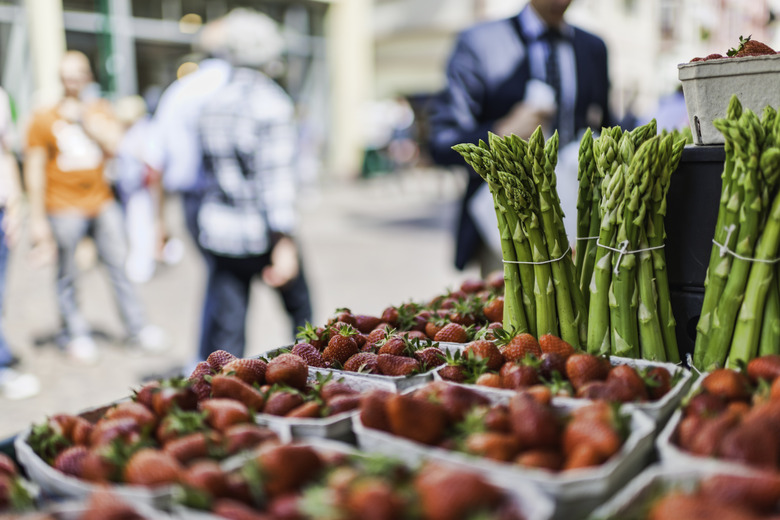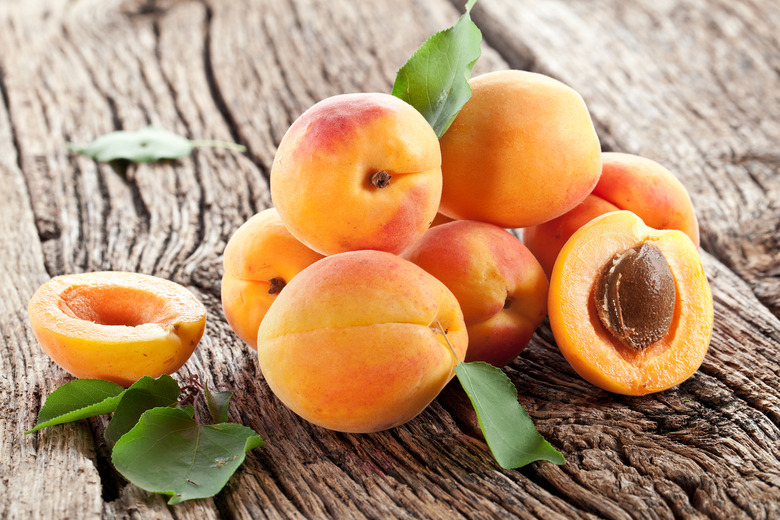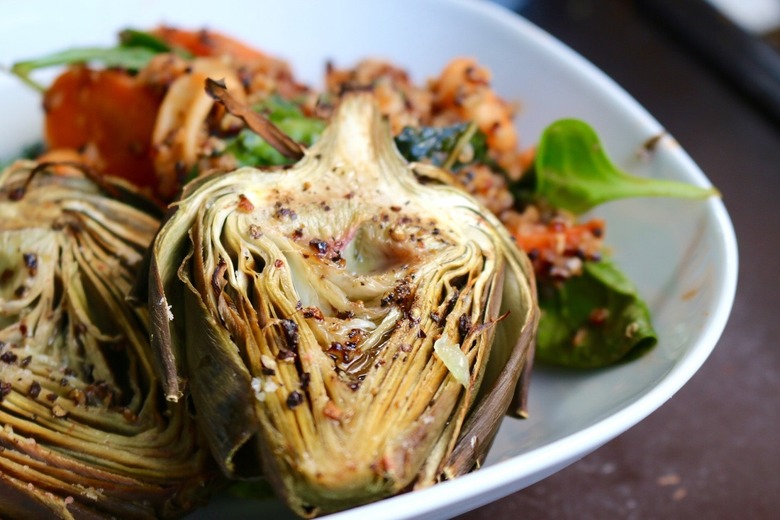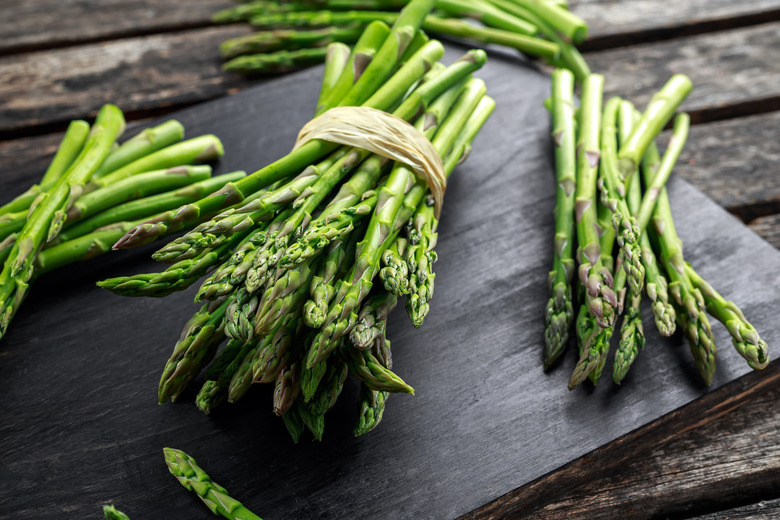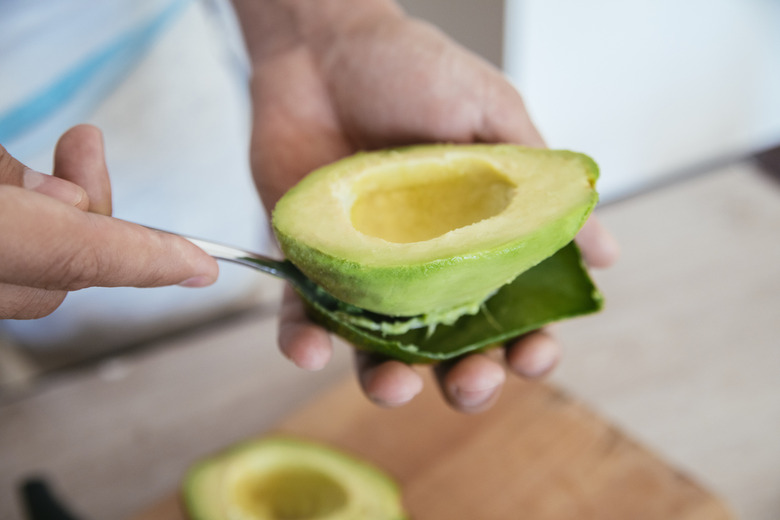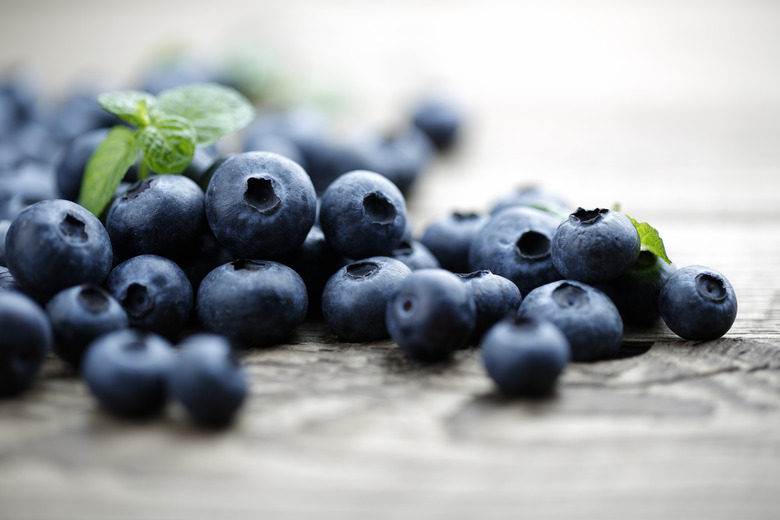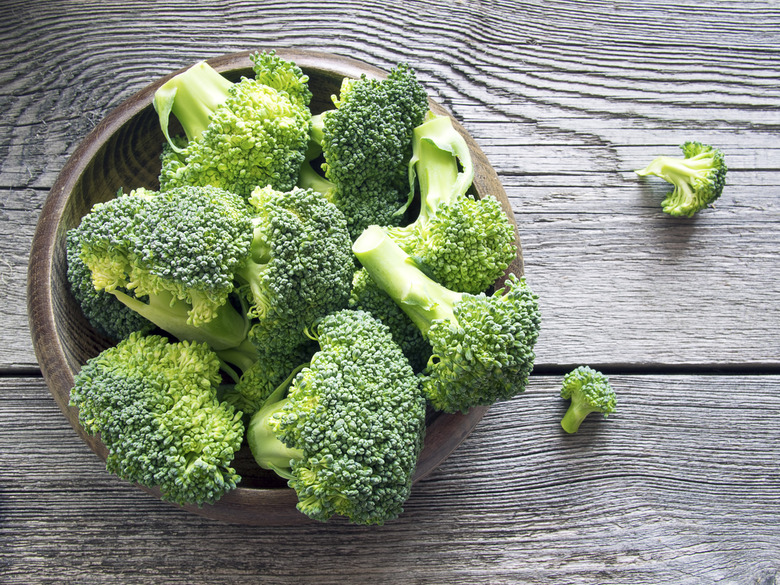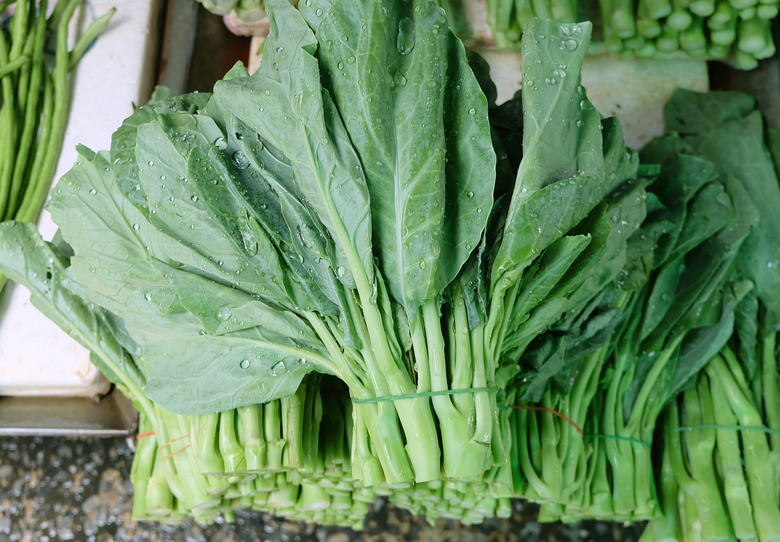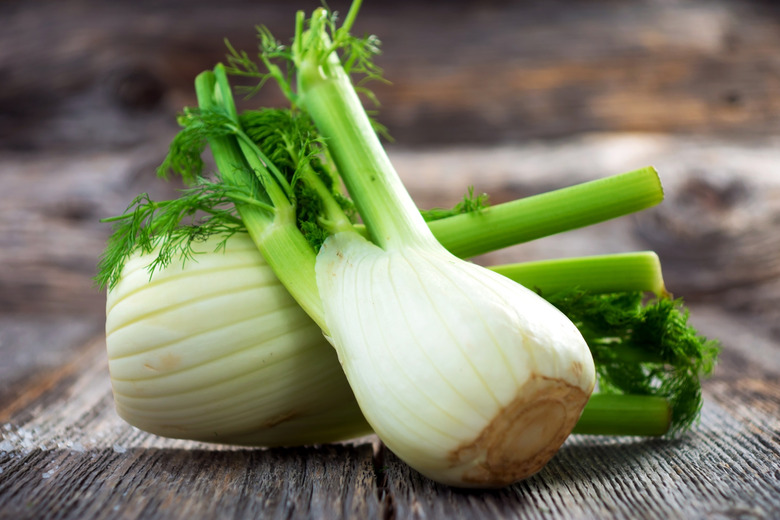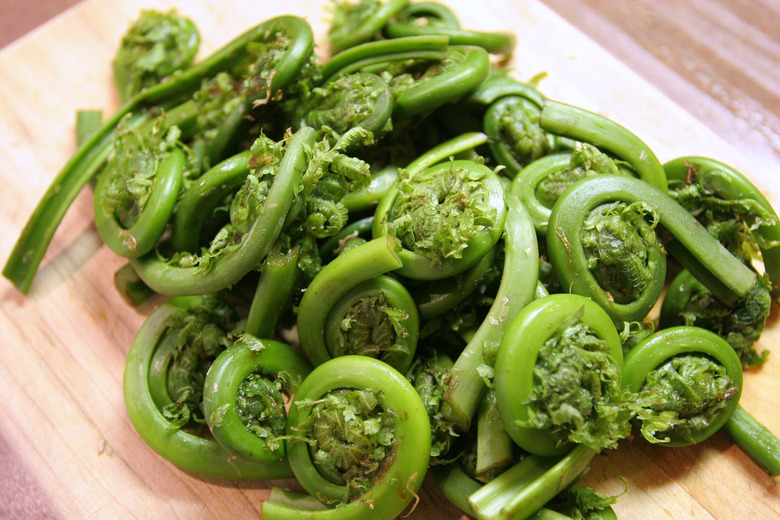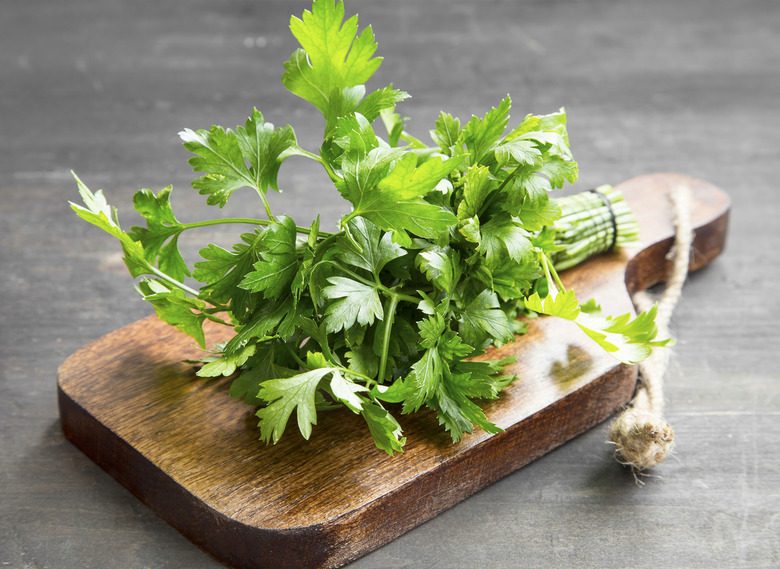Spring Superfoods You Should Be Eating Gallery
The drab and dreary winter season is finally behind us, and the beautiful bounty of spring produce is just about ready to be plucked from the earth.[related]
From mid-March to early June, some of the most vibrant, flavorful, and aromatic fruits and vegetables are at their peak of flavor and nutritional value.
The warmer weather likely has you craving fewer comfort foods and instead preparing lighter fare. While you might be apt to settle for frozen produce in the harsh winter when you're drowning your vegetables in casseroles and stews, we doubt you're keen on munching on soft, thawed broccoli in your spring salad.
Shopping local has its perks. Farmers markets and CSAs shake off the frost and provide shoppers with a greater variety of fresh, seasonal foods. These fruits and vegetables are not only tart, sweet, and delicious, but also rich in antioxidants and promote heart health. Even some unexpected superfoods, such as mustard greens — rarely the star of any shopping cart — are among the healthiest superfoods available, containing compounds that decelerate the development of age-related diseases. These are the 15 spring superfoods you need to be eating.
Michael Serrur and Holly Van Hare contributed to this story.
Apricots
Apricot season is short, and usually peaks in late April to early May. These stone fruits are less appreciated than peaches and plums, but apricots offer a distinct flavor that pairs well with sweet and savory dishes. Apricots, like these other nutrient-dense foods, are especially effective at preserving eye health. Their high vitamin A content (one cup of sliced apricots provides over half the daily requirement) combined with their carotene and lutein helps delay the loss of peripheral vision, and is also a remedy for alleviating dry eye symptoms.
Artichokes
A member of the sunflower (Compositae) family, artichokes are at their peak in March. Only the tips of the leaves and the heart of the artichoke are edible; the tough outer petals and fibrous "choke" will do to you as the latter's names implies. A study published in the American Journal of Clinical Nutrition showed that, per cup, artichoke hearts have higher antioxidant content than cranberries, blueberries, orange juice, red peppers, or broccoli. Artichokes are also rich in fiber, and artichoke leaf extract is commonly used in Germany as a remedy for indigestion and upset stomach.
Asparagus
April is the peak month of asparagus season, but the vegetable is widely available in stores from February to June. A serving of asparagus contains a modest amount of protein, a whopping 40 percent of the recommended daily intake of vitamin K, and 16 percent of the daily requirement of iron. Get your asparagus fix by making a delicate soup, or by adding it to scrambled eggs.
Avocado
Doctors may think they should come with a warning, but they should also come with nutrition facts. If everyone got a glance at those, avocados would be flying off the shelves at even faster rates than they are already. Not only are they loaded with heart-healthy fats, they also contain vitamin C, vitamin A, iron, vitamin B-6, and more.
Blueberries
Munching on a pint of fresh blueberries is one of spring's greatest pleasures, and thankfully this snack is one of the healthiest the season offers. Blueberries are incredibly rich in antioxidants, specifically gallic acid. Over 6,500 peer-reviewed articles have labeled this compound as a strong antifungal/antiviral agent, and a neuroprotective agent that maintains brain health.
Broccoli
It might be one of the country's most popular vegetables now, but broccoli only became popular in the United States in the early twentieth century. It was introduced by immigrants from southern Italy. Today, broccoli, which grows well in the cool spring and fall weather, is a versatile ingredient that is delicious either steamed, roasted, or sautéed. Just one cup of chopped broccoli contains more than a day's requirement of vitamin C, making it ideal for cold and flu season.
Collard Greens
This staple of Southern cooking is actually a superfood in disguise. Collard greens, in peak season from January to April, are similar in taste and texture to kale and mustard greens. A serving of cooked collards provides a quarter of the daily requirement of calcium and a half a day's worth of vitamin C. Collard greens are initially tough, but become tender after hours of slow cooking.
Fennel
Fennel, a vegetable in the carrot family, is a flavorful addition to many a spring salad. Its nutrients are so powerful, they can cure your stomachache; fennel has been used medicinally for centuries. Its flavor is similar to star anise and could add a specific yet enticing taste to your spring dinner menu.
Fiddlehead Ferns
The coiled fronds of the fiddlehead fern make them look as if they were plucked directly from a page of Alice in Wonderland. These unusual vegetables have a very short season beginning in mid-April and ending in June. If you can get your hands on them, fiddlehead ferns are an excellent source of vitamin A, phosphorus, and iron. To cook them, sauté them with garlic, pine nuts, and lemon, or use as a garnish for roasted salmon with creamy lemon sauce.
Green Peas
Whether you buy them fresh or frozen, green peas are a great addition to your diet. They're a substantial source of protein, fiber, and many vitamins and minerals. You might think they don't have many uses outside of spring pasta or salad, but peas can be used in dozens of delightful recipes. People in Mexico even use them as a pizza topping!
Mustard Greens
The inconspicuous mustard green has a pungent, peppery flavor that makes the leaves an ideal addition to stir-fries and soups. Cruciferous vegetables like mustard greens are rich in isothiocyanates, sulfur-containing nutrients that have been found to support the detoxification process in cells. Also, because they contain the chemical sinigrin, consumption of mustard greens has also been linked to a reduction in oxidative stress and development of age-related diseases.
Parsley
Parsley is an herb used mainly in American, European, and Middle Eastern cuisines. Curly-leaf parsley is mainly employed as a garnish or to add flavor to a recipe, while root parsley (rare in the United States) is often used in soups and stews in the Middle East and Eastern Europe. Parsley of all kinds is a surprising source of antioxidants, vitamins, and minerals.
Radishes
Though radishes are often overlooked as an ingredient, they add a unique kick to many salads and side dishes. They vary in color, size, and even taste; some varieties, such as the daikon radish, are known for their stunning colors and patterns. Radishes provide a significant amount of vitamin C with smaller doses of other essential nutrients.
Ramps
In the Allium family, which includes garlic and onions, ramps are like the elusive and mysterious cousin. They only show up once a year and chefs clamor to get their hands on them during their short season between from April and mid-June. Besides being an elegant alternative to scallions, ramps contain high amounts of vitamin A, C, and selenium. Ramps are incredibly versatile, and are delicious either grilled with lemon or pickled.
Watercress
Watercress leaves and stems reach their peak flavor and texture during the spring harvest. These underutilized greens add elegance to traditional salads, but also offer a host of health benefits. Watercress is a plentiful source of vitamin K and C, and also contains gluconasturtiin, a compound believed to inhibit the growth of carcinogens. Try adding watercress to quinoa, or use it in a vibrant spring risotto. The vegetable's superfood qualities could, like these other foods, help to stave off cancer!
More from The Daily Meal:
19 Chemicals You Didn't Know Were in Your Food
The Healthiest Peanut Butter Brands
30 Foods Doctors Won't Eat — and Why
